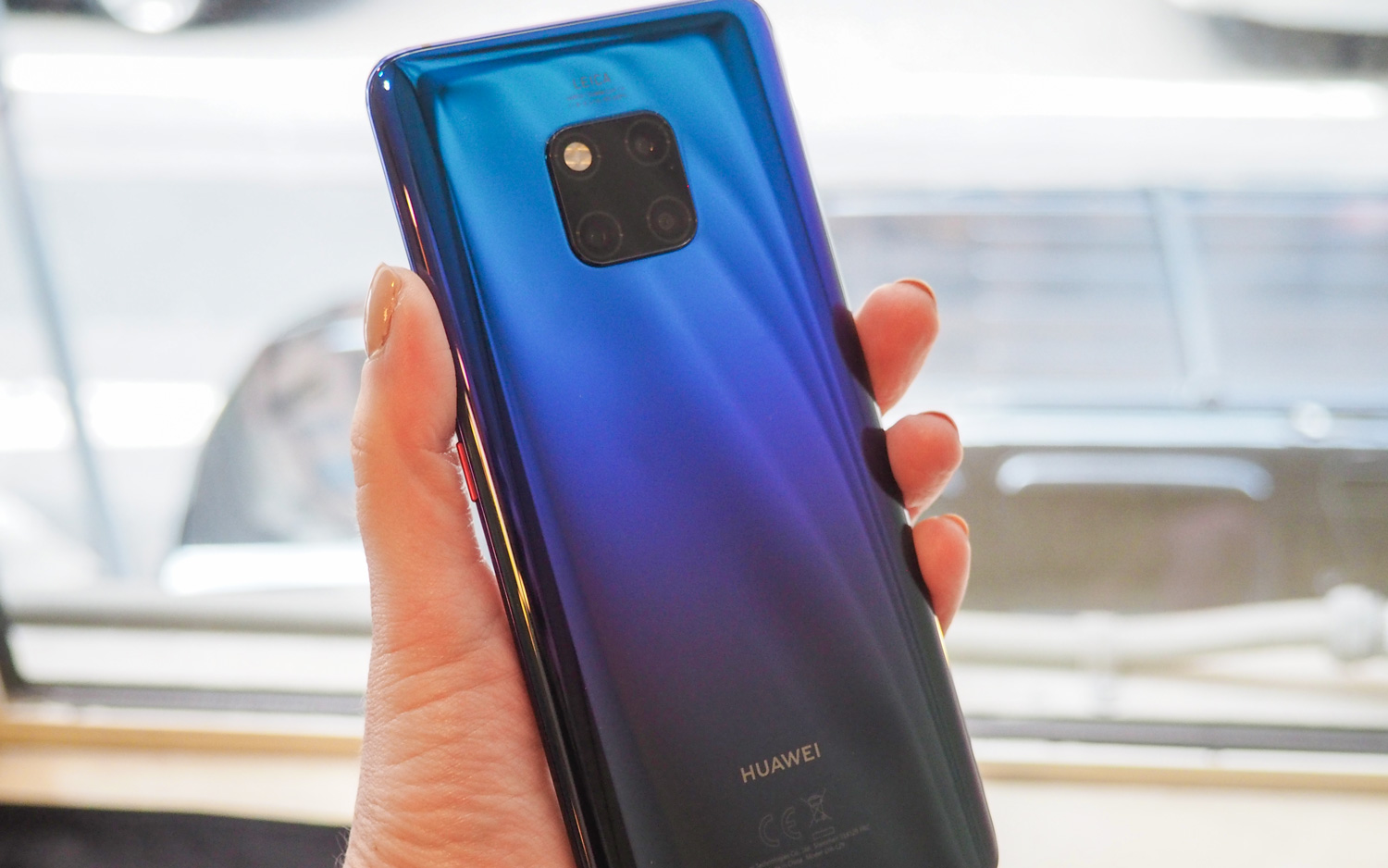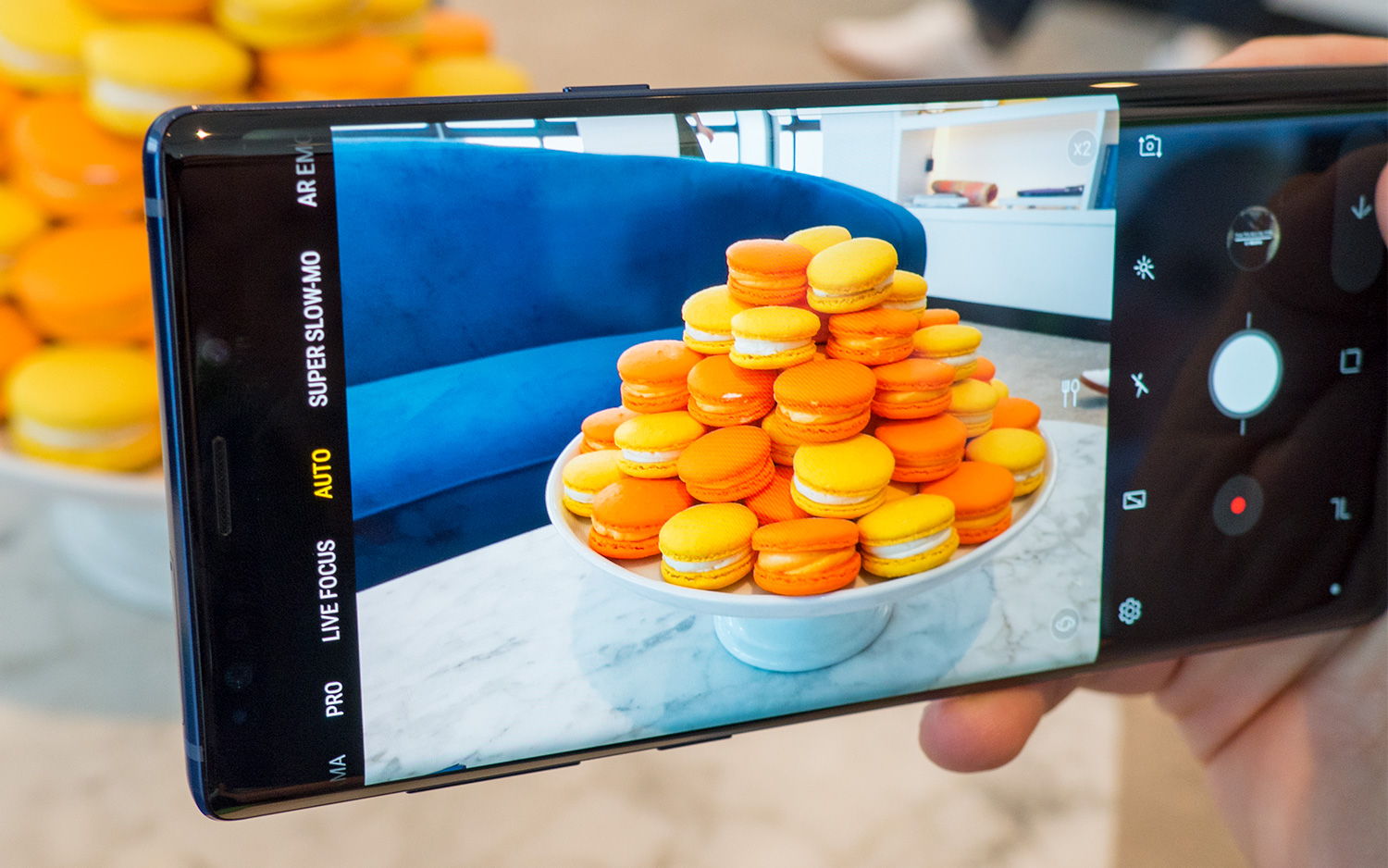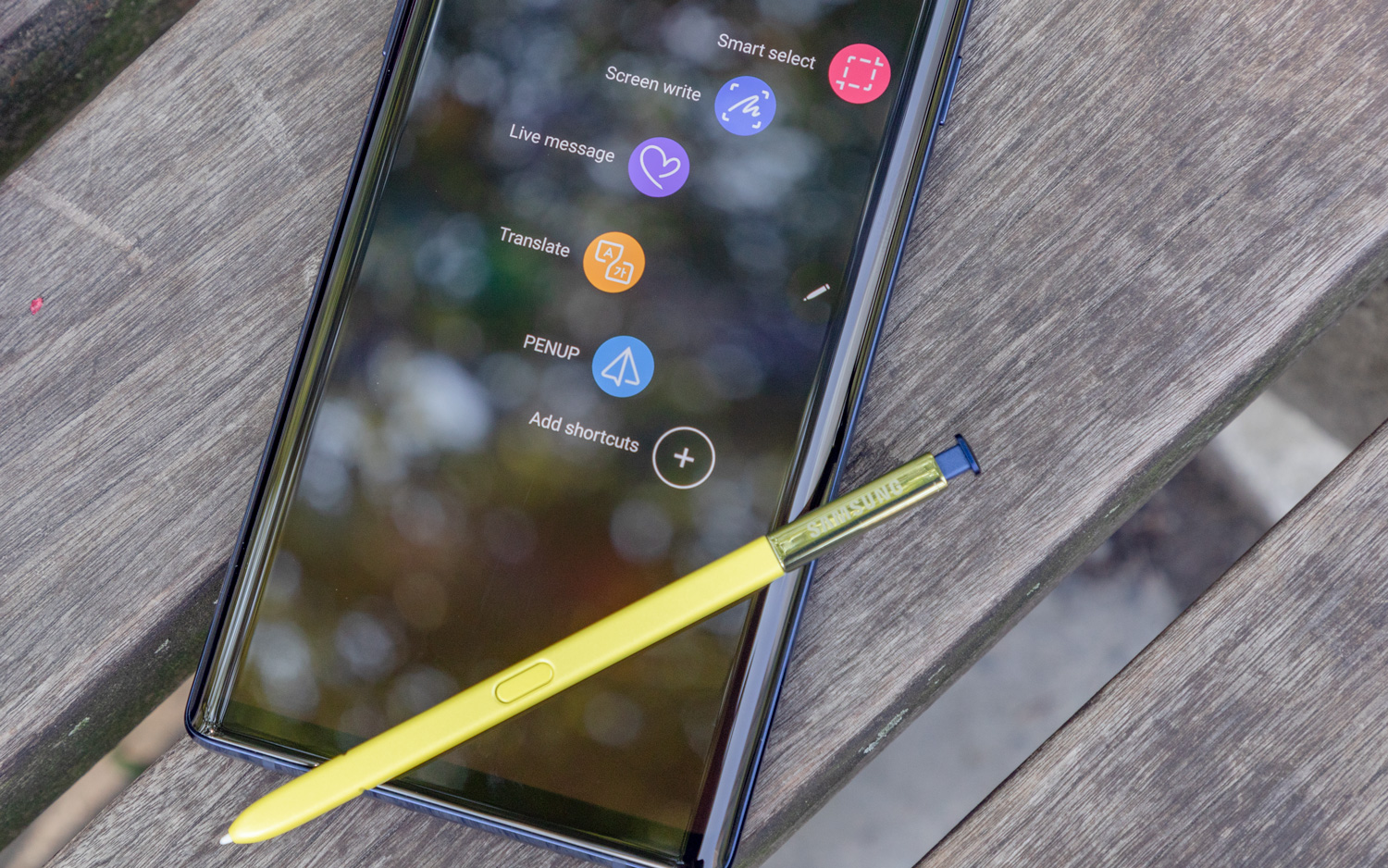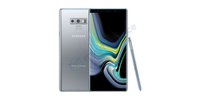Huawei Mate 20 Pro vs. Galaxy Note 9: Which Big-Screen Phone Should You Buy?
The Huawei Mate 20 Pro and Galaxy Note 9 are two of the biggest and most powerful Android phones yet. But which one is right for you?
Huawei's Mate 20 Pro has every flagship feature you could possibly want: A triple-lens camera, gorgeous design, huge display, the latest Android software and an impressive 7-nanometer processor. But how does it stack up to Samsung's Galaxy Note 9, which reigns supreme in the land of supersized Android phones and boasts an improved S Pen, smart AI cameras of its own and long battery life?

After spending some time with the Mate 20 Pro, we can say that Samsung faces stiff competition — if Huawei's flagship ever becomes widely available, which isn't guaranteed.
Huawei Mate 20 Pro vs. Samsung Galaxy Note 9: Specs Compared
| Row 0 - Cell 0 | Mate 20 Pro | Galaxy Note 9 |
| Price | 1,049 euros (U.S. pricing TBA) | $999 (128GB), $1,249 (512GB) |
| Processor | Kirin 980 | Snapdragon 845 |
| OS | Android Pie with EMUI 9.0 | Android Oreo 8.1 |
| Screen | 6.39 inches AMOLED (3120 x 1440 pixels) | 6.4-inch Super AMOLED (2960 x 1440) |
| RAM | 6GB | 6GB, 8GB |
| Storage | 128GB, 256GB | 128GB, 512GB |
| microSD | No | Yes, up to 512GB |
| Rear Camera | 40-MP main (f/1.8), 8-MP telephoto (f/2.4), 20-MP ultra-wide (f/2.2) | Dual 12-MP (f/1.5) and (f/2.4) |
| Front Camera | 24-MP (f/2.0) | 8 MP (f/1.7) |
| Battery Size | 4,200 mAh | 4,000 mAh |
| Water Resistance | IP68 | IP68 |
| Colors | Pink Gold, Midnight Blue, Emerald Green, Twilight, Black | Lavender Purple, Ocean Blue, Midnight Black |
| Size | 6.2 x 2.8 x 0.33 inches | 6.3 x 3 x 0.34 inches |
| Weight | 6.7 ounces | 7.1 ounces |
Design
The Mate 20 Pro has a notch and the Galaxy Note 9 does not. Samsung remains the lone holdout when it comes to adopting Apple's controversial screen cutout.

But, unlike other copycats, the Mate 20 Pro's notch is a design choice made out of necessity, unlike other copycats. Like Apple, Huawei needed it to include a facial-recognition feature, in addition to an in-screen fingerprint sensor that is the future of smartphone biometrics. Samsung still includes a fingerprint sensor on the back of its phones, including the Note 9, and offers both facial and iris recognition, but neither is as sophisticated or as secure as the iPhone's. Huawei is aspiring for Apple levels of security with the Mate 20 Pro.

Huawei is one of the few smartphone makers pushing design forward with interesting finishes and beautiful colors. The Mate 20 Pro is a gorgeous smartphone that comes in five shades, including the Twilight gradient that Huawei has offered on past devices. This signature color is a standout. Pink Gold and Black are less eye-catching, but still solid picks. All three hues come in a glassy finish, which means they're fingerprint magnets. There's just no getting around it.

The Emerald Green and Midnight Blue variants offer a hyper optical ridged pattern on the glass, which creates an interesting textured feel that's similar to scratching a vinyl record. Huawei says this finish repels fingerprints, but in our hands-on time with the devices, we didn't find that the patterned versions were more smudge-proof than the smooth, glassy versions.
Another design element that sets the Mate 20 Pro apart is the boxed, triple-lens camera array on the back of the phone. When most flagships are trying to mimic the iPhone X with two stacked lenses, the Mate 20 Pro stands out.
MORE: 5 Ways the Note 9 Beats the iPhone Xs Max
The Galaxy Note 9 doesn't push any design boundaries; it looks pretty much like every other smartphone Samsung has made in the last few years. The Note 9 still feels premium, with its all-glass design and beautiful curved display, but it's not going to make anyone do a double take.
Advantage: Huawei
Display
Flagship phone screens are only getting better, and the Mate 20 Pro and Galaxy Note 9 have some of the best displays around.

The Mate 20 Pro's 6.39-inch AMOLED (3120 x 1440 pixels) panel is slightly higher-res than the Galaxy Note 9's 6.4-inch Super AMOLED (2960 x 1440) screen, but that doesn't translate to a significant real-world difference — at least in our hands-on time. You can't go wrong with either phone.
Advantage: Draw
Cameras
Huawei makes great smartphone cameras, as its P20 Pro proved in a shoot-out with the iPhone X and Pixel 2. The Mate 20 Pro's triple-lens array is even more advanced, with a 40-megapixel, wide-angle lens and an 8-MP telephoto one. Huawei swapped out the P20's monochrome sensor for a new 20.2-MP, ultrawide-angle lens in the Mate 20 Pro, which helps you squeeze more scenery in the frame.

The effects are dramatic, from what we saw in our hands-on time with the phone; now Manhattan skyscrapers can easily fit in ultrawide-angle shots.
To compare, the Note 9 has a 12-MP, dual-lens camera, though it does include a mechanical dual aperture that adjusts to allow in more light for extremely dim settings. The Note 9 could win when it comes to nighttime shots.

Both the Note 9 and Mate 20 Pro rely on artificial intelligence to make your photos pop. The Note 9's AI-assisted Scene Optimizer feature can be turned off, while the Mate 20 Pro's AI is baked in from the get-go and can't be disabled.
MORE: Best Smartphone Camera - Phones With the Best Quality ...
But it's clear that Huawei has worked on making its camera smarter and capable of recognizing a variety of objects and scenes — some 1,500 in total. We're excited to try out a new feature called Predict Focus, which locks onto the subject of a photo even if it drifts (or runs) to a different part of the frame.
Advantage: Huawei
Performance
Huawei is challenging Apple with the first 7-nanometer CPU for Android phones, the Kirin 980. The new iPhone XS Max with its A12 Bionic chip blows other flagships away in terms of processing power and speed. The Galaxy Note 9, with its Qualcomm Snapdragon 845 processor, scored 8,876 on the Geekbench 4 test of overall system performance, compared to the 11,515 score the XS Max clocked on the same test.

Huawei promises that the Kirin 980 will deliver huge performance gains over the Kirin 970: 20 percent faster speed, 40 percent better power efficiency and 45 percent faster GPU for better sustained gameplay.
MORE: 10 Cheap Android Smartphones (Under $250) Ranked Best to Worst
If the Kirin 980 lives up to Huawei's claims, the Mate 20 Pro could easily beat the Note 9, and maybe even top the OnePlus 6 for best-performing Android phone.
Advantage: Huawei
Battery Life
The Galaxy Note 9, with its 4,000-mAh battery, lasted more than 11 hours on the Tom's Guide Battery Test (continuous web surfing over T-Mobile's LTE network). The Mate 20 Pro has a bigger, 4,200-mAh battery, so we expect it to last a little longer than the Note 9.

But the Mate 20 Pro also has some features that make its battery size a little less important. The new phone comes with a 40-watt SuperCharge brick that takes the battery from 0 to 70 percent in 30 minutes. Rival Android flagships can also charge up quickly, but not that quickly — most (including the Note 9) can juice up to 50 percent in a half hour with their proprietary, quick-charging cables.
The Mate 20 Pro is also capable of acting as a Qi charging pad for reverse-charging another device, which is extremely cool. We tried this by placing an iPhone X on top of the Mate 20 Pro, and the iPhone started charging as expected. That might not help your Mate 20 Pro battery last longer, but it will definitely make you more popular.
Advantage: Huawei
Price and Availability
The bad news: It's unclear if the Mate 20 Pro will ever be easily available to buy in the U.S. (or many other countries). The Galaxy Note 9 doesn't have that issue. You can go to your local carrier or Best Buy or online retailer and snag one right now.
The Mate 20 Pro is also more expensive than the Note 9 at 1,049 euros, which is more than $1,200 in the U.S. The Mate would likely be less expensive than that if it were sold in America, however. The Note 9's starting price in Europe is 1,029 euros, but the device is $999 stateside.
Until Huawei brings the Mate 20 Pro to the U.S., Samsung has the edge.
Advantage: Note 9
Outlook
Huawei's Mate 20 Pro could be the big-screen Note 9 rival we've been waiting for, but its lack of pricing and availability for U.S. buyers is a big question mark right now.
On paper, the Mate 20 Pro's specs basically blow every other flagship out of the water. But specs don't tell the whole story, which is why we'll update this face-off with the winner after publishing our full review of the Mate 20 Pro. Stay tuned.
Credit: Tom's Guide
Sign up to get the BEST of Tom's Guide direct to your inbox.
Get instant access to breaking news, the hottest reviews, great deals and helpful tips.
Caitlin is a Senior editor for Gizmodo. She has also worked on Tom's Guide, Macworld, PCWorld and the Las Vegas Review-Journal. When she's not testing out the latest devices, you can find her running around the streets of Los Angeles, putting in morning miles or searching for the best tacos.


